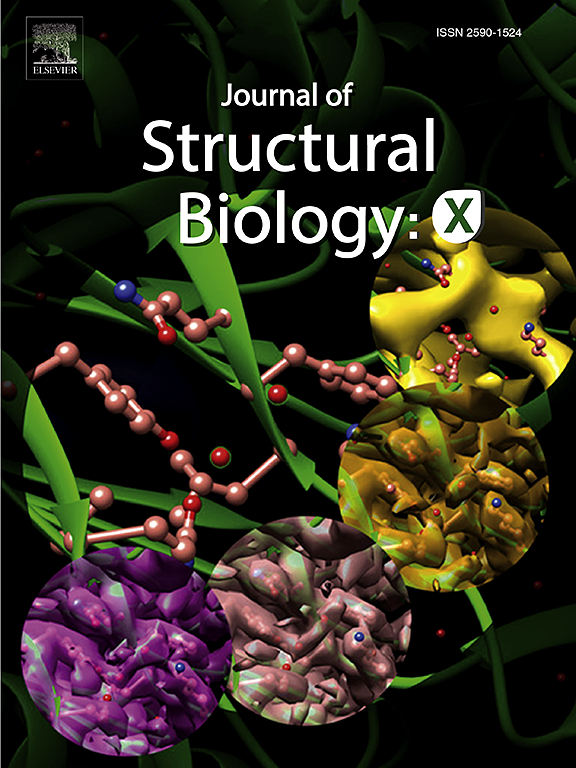Ice thickness control and measurement in the VitroJet for time-efficient single particle structure determination
IF 2.7
3区 生物学
Q3 BIOCHEMISTRY & MOLECULAR BIOLOGY
引用次数: 0
Abstract
Embedding biomolecules in vitreous ice of optimal thickness is critical for structure determination by cryo-electron microscopy. Ice thickness assessment and selection of suitable holes for data collection are currently part of time-consuming preparatory routines performed on expensive electron microscopes. To address this challenge, a routine has been developed to measure ice thickness during sample preparation using an optical camera integrated in the VitroJet. This method allows to estimate the ice thickness with an error below ±20 nm for ice layers in the range of 0–70 nm. Additionally, we characterized the influence of pin printing parameters and found that the median ice thickness can be reproduced with a standard deviation below ±11 nm for thicknesses up to 75 nm. Therefore, the ice thickness of buffer-suspended holes on an EM grid can be tuned and measured within the working range relevant for single particle cryo-EM. Single particle structures of apoferritin were determined at two distinct thicknesses of 30 nm and 70 nm. These reconstructions demonstrate the importance of ice thickness for time-efficient cryo-EM structure determination.
在 VitroJet 中进行冰厚度控制和测量,以实现高效的单颗粒结构测定。
将生物大分子嵌入最佳厚度的玻璃体冰中对于利用低温电子显微镜进行结构测定至关重要。目前,在昂贵的电子显微镜上进行冰层厚度评估和选择合适的数据采集孔是耗时的准备工作的一部分。为了应对这一挑战,我们开发了一种常规方法,利用集成在 VitroJet 中的光学相机在样品制备过程中测量冰厚度。这种方法可以估算出 0 - 70 nm 范围内冰层的厚度,误差低于 ±20 nm。此外,我们还分析了针式打印参数的影响,发现中值冰层厚度可以再现,标准偏差低于±11 nm,厚度可达 75 nm。因此,可以在单颗粒冷冻电镜的相关工作范围内调整和测量电磁网格上缓冲悬浮孔的冰厚度。在 30 nm 和 70 nm 两种不同厚度下测定了阿泊铁蛋白的单颗粒结构。这些重建结果表明了冰厚度对高效冷冻电镜结构测定的重要性。
本文章由计算机程序翻译,如有差异,请以英文原文为准。
求助全文
约1分钟内获得全文
求助全文
来源期刊

Journal of structural biology
生物-生化与分子生物学
CiteScore
6.30
自引率
3.30%
发文量
88
审稿时长
65 days
期刊介绍:
Journal of Structural Biology (JSB) has an open access mirror journal, the Journal of Structural Biology: X (JSBX), sharing the same aims and scope, editorial team, submission system and rigorous peer review. Since both journals share the same editorial system, you may submit your manuscript via either journal homepage. You will be prompted during submission (and revision) to choose in which to publish your article. The editors and reviewers are not aware of the choice you made until the article has been published online. JSB and JSBX publish papers dealing with the structural analysis of living material at every level of organization by all methods that lead to an understanding of biological function in terms of molecular and supermolecular structure.
Techniques covered include:
• Light microscopy including confocal microscopy
• All types of electron microscopy
• X-ray diffraction
• Nuclear magnetic resonance
• Scanning force microscopy, scanning probe microscopy, and tunneling microscopy
• Digital image processing
• Computational insights into structure
 求助内容:
求助内容: 应助结果提醒方式:
应助结果提醒方式:


